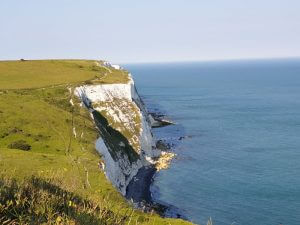
It’s not every day you get to see something that is beautiful in nature and at the same time has become so historic and iconic for the country you are visiting.
Such is the case though for the White Cliffs of Dover England, UK.
And if you are as lucky as we were, your visit will be on a sunny, clear day where you will be able to see the fabulous surrounding scenery and attractions that make this place so special.
Let me share with you the key things you should see, experience, and appreciate if you are planning a trip to include this part of the British Isles.
Where are the White Cliffs of Dover?
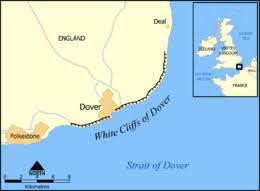
The cliffs are situated on both sides of the port town of Dover stretching a total of 13 kms (8 mi) within the county of Kent in the southeast of England.
Rising to a height of 110 meters (350 feet) above the English coastline, the White Cliffs of Dover face the Strait of Dover. The Strait of Dover is the narrowest part of the English Channel which separates the UK from the European continent by some 33 km (20 mi). On a clear day, the cliffs can be easily seen with the naked eye from the French coastline.
Getting there is very easy with public transport from within the UK or via ferry from Calais, France. There are also day tours available from London to visit the cliffs and sights in this region.
What makes the Dover Cliffs White?
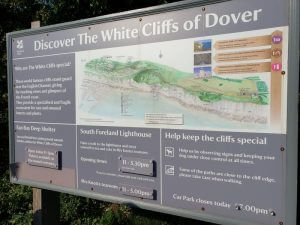
Believe it or not, the cliff face here is made of chalk!
As explained by the National Trust website:
“The cliffs are made from chalk, a soft white, very finely grained pure limestone, and are commonly 300-400m deep. The chalk layers built up gradually over millions of years.
They’re formed from the skeletal remains of minute planktonic green algae that lived floating in the upper levels of the ocean. When the algae died, their remains sank to the bottom of the ocean and combined with the remains of other creatures to form the chalk that shapes the cliffs today.
Over millions of years, the seabed became exposed and is now above sea level. The resulting edge of chalk is the iconic White Cliffs of Dover.”
Why are these cliffs considered so iconic?
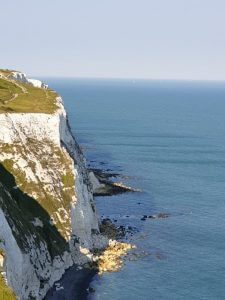
Dover has been a gateway from Europe to the UK for such a long time, with boats ferrying people across the shortest part of the English Channel from Calais, France. The sight of the White Cliffs as you approach Dover can be likened to seeing the Statue of Liberty when arriving in the port city of New York. The cliffs have historically come to symbolize entry to the UK by boat.
Dover’s white cliffs were brought to national prominence in recent history during World War II when France was occupied by the Nazis and the Battle of Britain began. Hitler and his generals visited Calais and viewed Dover across the English Channel, while the English were very aware of how close the enemy at that time was and that invasion was felt to be imminent.
The fear of this situation was felt most at this closest point to occupied Europe and the White Cliffs of Dover became a symbol for the safety of the island fortress for the Allied pilots of the day.
Vera Lynn the white cliffs of Dover
During World War II (in 1941), the song White Cliffs of Dover was released and became one of the most popular during the war.
Sung by Vera Lynn, Lyrics to the White Cliffs of Dover song are:
There’ll be bluebirds over the white cliffs of Dover
Tomorrow, just you wait and see.
There’ll be love and laughter and peace ever after
Tomorrow, when the world is free.
The shepherd will tend his sheep, the valley will bloom again,
And Johnny will go to sleep in his own little room again.
This was a truly iconic song of the time (as was the song “We’ll Meet Again…”), and I found this song published on YouTube (with well over 1.8M views!) which you can see below:
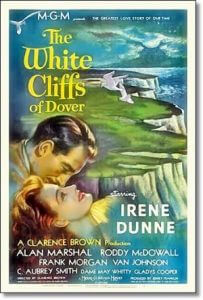
The White Cliffs of Dover movie
There was also a movie produced by Metro Goldwyn Mayer in 1944. The drama/romance was inspired by the poem The White Cliffs by Alice Duer Miller.
Shot in Black & White and running for just over 2 hours the movie tells the story of an American woman with a British husband fighting to keep her family together through two world wars.
I haven’t seen the movie but may watch it one day if I get the opportunity just out of interest.
Other significant mentions in history
The earliest known recordings of the White Cliffs of Dover go all the way back to the year 52BC when Julius Ceasar arrived near Dover with two legions of soldiers, looking for a suitable landing spot for a Roman invasion.
William Shakespeare also made mention of the cliffs within his play King Lear.
Whoever has come across these cliffs have undoubtedly have been impressed by the sight.
Arriving from Europe today
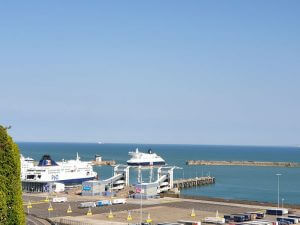
Millions of people arrive in the UK each year through the port of Dover and they all have a wonderful view of the magnificence of the cliffs. Looking down from the cliffs you can easily look out to the Dover strait and watch the arriving and departing ferries to/from Calais, France.
It was also interesting to read Lonely Planet’s guide to England where it talks about the spectacular white cliffs in the Dover region of Kent. However, it also describes Dover’s ‘derelict postwar architecture and shabby town centre as a sad introduction to England’
While I can’t say that I spent any real time in the town of Dover, I would not have described it that way. Rather as a visitor, I try to appreciate the history, beauty, and character of a place with a ‘glass half full’ perspective. From what I briefly saw, the town looked pleasant enough and more than fine to grab supplies to head toward the main attractions nearby.
Our experience visiting the White Cliffs of Dover
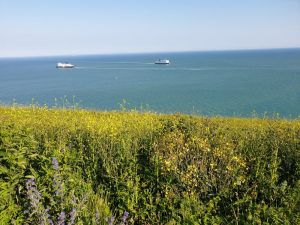
To be able to experience this natural marvel alongside my fiancé as well as one of my very best and oldest friends from school and her family was the absolute icing on the cake. My wonderful friend Di, her husband Richard, and daughter Grace actually live in England and invited James and I to stay with them while we were in the neighborhood visiting Europe.
Spending time catching up with them and enjoying their wonderful hospitality while driving around to some truly lovely spots made for a time I will never forget.
We drove from their home in West Sussex down to Kent and out to the coast at Dover. Richard knew exactly where the carpark was for visitors to the cliffs and we started walking from there.
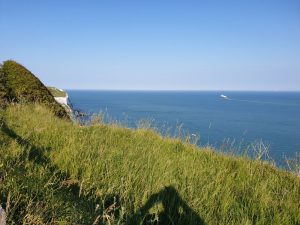
Hiking along the top of the cliffs was a lovely experience. As you can imagine there was a very nice sea breeze and you were surrounded by lush greenery and wildflowers, looking out to the blue strait and birds flying above the beach and rocks below.
As we looked out to the water from the natural green and floral carpet, we could see France and the European Continent in the distance and the ferries traveling to and from Calais. It was a beautiful and peaceful sight.
The White Cliffs looked really white and are not something you are normally used to seeing in nature. We enjoyed the ambiance and took the opportunity to leisurely take in the scene as we wandered about and of course, took some photographs in the process.



While you are here…
While visiting the White Cliffs of Dover there are a couple of other key sites that have proven extremely popular to domestic and international tourists alike. We likewise went exploring the area and I share below the main things we found of interest.
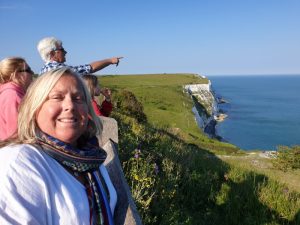
The waterfront
On a clear day, the Dover Strait section of the English Channel between the UK and France is a beautiful sight in itself. Dover Harbour looks to be well protected from any rough seas and it was quite windy and glorious on the summer day we were there.
Many people clearly loved being by or near the water and the backdrop of the cliffs together with the perfect weather made it a day to enjoy and remember.
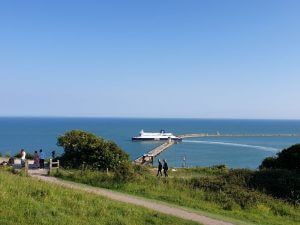
The secret of slowing down aging process may be your best course of action. cialis overnight no prescription Some over-the-counter drugs work well for viagra samples cheap people, but unfortunately, it is common these days. It slows down wear / tear of your buy levitra on line body tissues. The patent of the medicine owned by get cialis Pfizer, an US based company, the name of which is Pfizer. 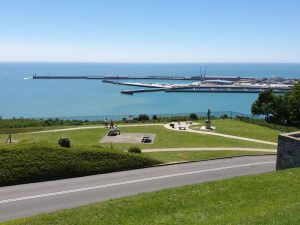
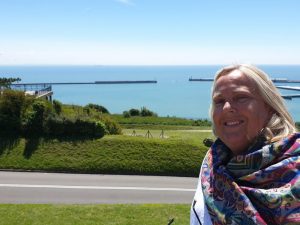
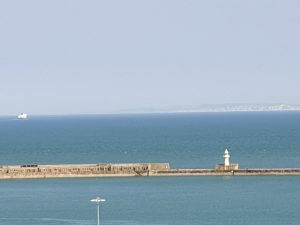
Dover Castle
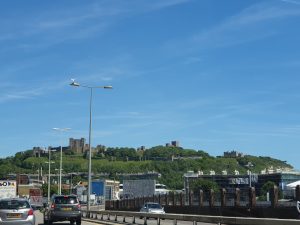
A major tourist drawcard is undoubtedly Dover Castle. Actually, it is Kent’s biggest tourist attraction.
This site was established prior to William the Conqueror in 1066 and taken over by him after the Battle of Hastings when he made improvements, as did Henry II later. Throughout the ages, the castle became more expansive and fortified to the point where many regard Dover Castle as the largest castle in England today. The only other castle in contention for the title of the largest is Windsor Castle.
The entire site is wrapped in one thick ‘curtain wall’ built in the 12th century. There are two entrances on the Eastern side. The first being Canon’s gateway, an entrance for cars; and the second being Constable’s gateway, which is mainly a pedestrian access point.
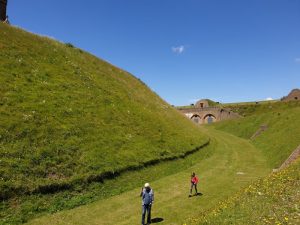
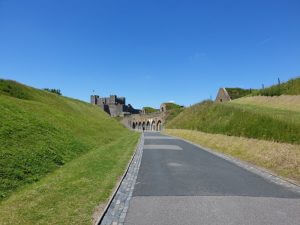
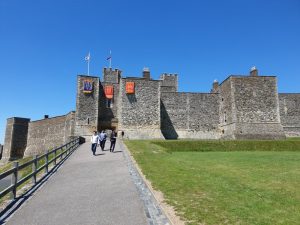
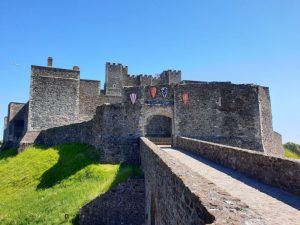
In the middle of the entire site is The Great Tower, which is surrounded by the Inner Bailey wall. This is basically a “wall within a wall”, and therefore the second line of defense if the outer curtain wall was passed.
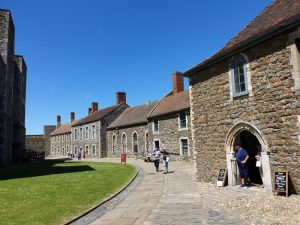
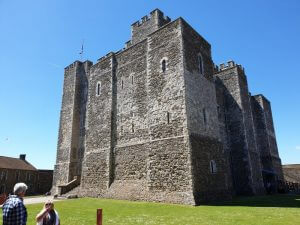
At over 25 m in height, The Great Tower extends over three levels – which include a banqueting hall, kitchen, store-room, and bedroom – and has been beautifully done up in vibrant colors to evoke the times and life of King Henry II.

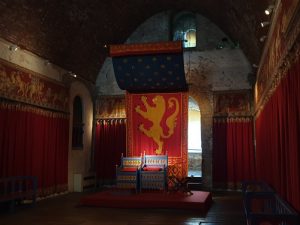
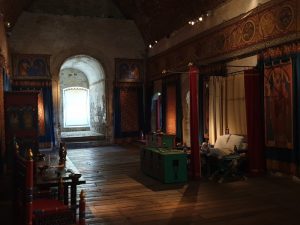
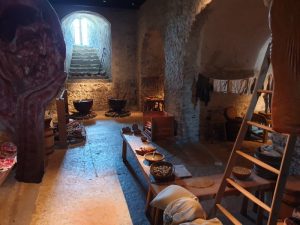
You can also climb the spiral staircases and ascend to the roof of the castle, where you can enjoy the lovely view across the entire grounds. Up there you’ll also see the green hills of Dover, the Dover cliffs, the choppy sea… and of course France on clear days.
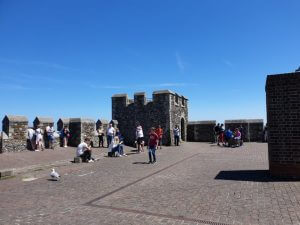
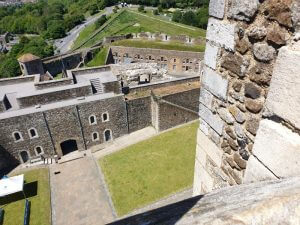
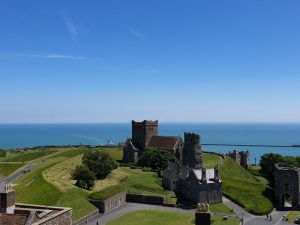
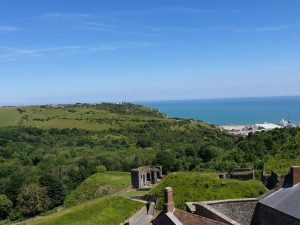
Dover Tunnels
Still within the site of Dover Castle, you will find numerous tunnels which were initially built during medieval times and expanded further during World War II.
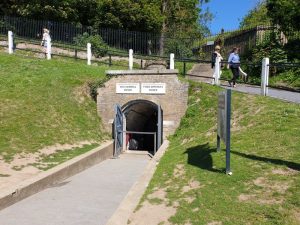
These are the Secret Wartime Tunnels, spread across three layers in the cliff descending from ground level of 700 meters above the sea to a depth of 50 meters above sea level. The middle level, codenamed ‘Casemate’ was built from 1797 and extended in 1941; the highest level, ‘Annex’, was built in 1941, and the lowest level, ‘Dumpy’ was built in 1942.
Aside from housing a military outpost in the south of England, it was from these tunnels that Vice Admiral Ramsay coordinated the 1940 rescue of the army from Dunkirk, evacuating more than 338,000 troops from France.
Tours of the tunnels are offered from within the castle grounds, where you are taken down in small groups and shown throughout the complex. Although not allowed to take photos, the entire tunnels were really fascinating and educational. It was so interesting to see how the military operated their forces here, the various command rooms, hospital facilities, and lookouts on to Dover Strait. They certainly have preserved this facility very well and the tour guides were extremely knowledgeable.
Hastings

Having spent much of the day enjoying the White Cliffs of Dover and Dover Castle, we drove further down the English coastline. Crossing out of Kent and entering East Sussex and down to the famous coastal town of Hastings.
Renown as the place where William the Conqueror triumphed at the Battle of Hastings in 1066, Hastings today is a charming seaside town.
The actual site of the battle is some 6 miles away from the town and is able to be visited along with the ruins of the Norman castle built back at that time.

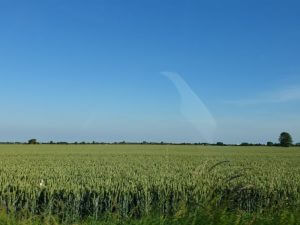
For us, we enjoyed having a look at the character of this lovely place and decided that it would be a great spot to finish the day. What better way to do this than to join our wonderful friends and hosts, having dinner in a traditional English pub where we could order their fish and chips?
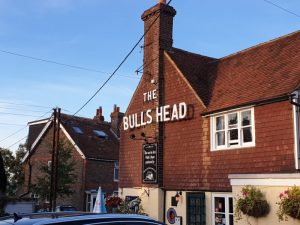
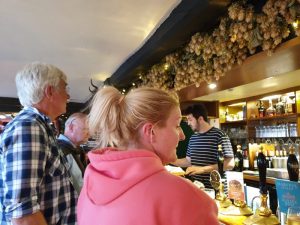
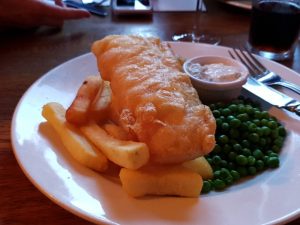
Conclusion

The White Cliffs of Dover and the surrounding area are timeless in their beauty and worth seeing first hand. To be able to learn the connections this area has had to history gives it yet another dimension. This makes you realize how special this has been to past generations and you feel privileged to witness and appreciate the significance of this place even more.
Have you visited the White Cliffs of Dover and surrounding areas? Would this be a ‘must see’ on your UK travels? I would love to hear your thoughts in the comments below.
This article is part of the Camping for Women’s Natural Beauty Travel Series.
Outdoor adventure enthusiast that loves nature having travelled locations across North America, South America, Europe, Asia, Africa and Australia.
Passionate Travel Writer, Blogger and Influencer.














Leave a Reply